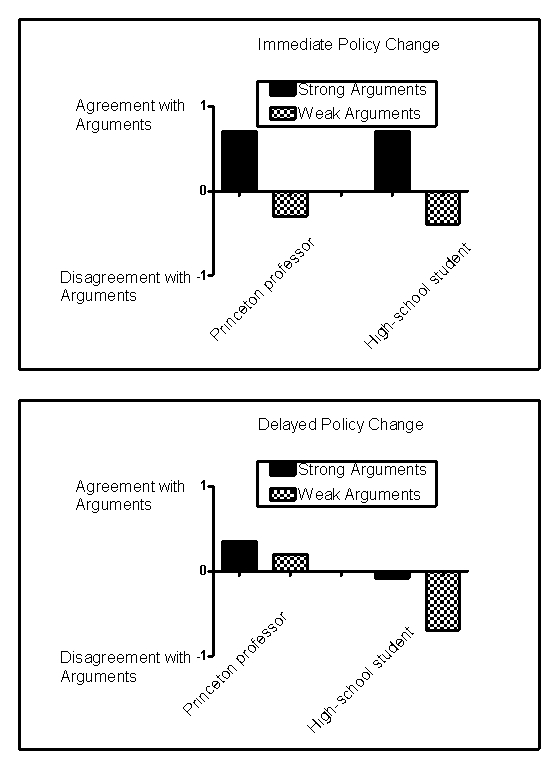Use the following to answer questions :
Scenario II
The scenario contains fabricated results consistent with the following study:
Petty,R.E. ,Cacioppo,J.T. ,& Goldman,R.(1981) .Personal involvement as a determinant of argument-based persuasion.Journal of Personality and Social Psychology,41,847-855.
Every day,consumers are exposed to scientifically based sales,marketing,and public relations strategies designed to influence purchasing decisions,change opinions,or win votes.One common sales strategy is the foot-in-the-door technique,a method that involves first making a smaller request that consumers are likely to grant and then following it with a larger request.Another common strategy is the door-in-the-face technique,which involves making an unreasonably large request that consumers will reject and then following it with a smaller request.When persuasion is necessary,it usually takes one of two forms: heuristic persuasion,which involves an appeal to habits or emotion,and systematic persuasion,which involves an appeal to facts and reason.Often,people will rely more on heuristics-simple shortcuts or "rules of thumb"-to make decisions instead of systematically weighing the evidence.
Petty and colleagues (1981) investigated some of these techniques in university students listening to arguments in favour of their university requiring an institution-level comprehensive final examination for graduation.Some students were led to believe that,if adopted,this policy would take place right away,and some were led to believe that the change would take place in a decade.In addition,some of the students were led to believe that they were listening to an argument from a Princeton professor,and others were led to believe that they were listening to an argument from a high school student.Finally,some students heard strong arguments in favour of the policy,and some heard weak arguments.Thus,the experiment arranged six groups of students.For example,one group of students heard strong arguments from a high school student about a far-removed policy change.Figure 13.1 shows fabricated results illustrating the major findings of this experiment.
Figure 13.1 
-(Scenario II) Which example describes systematic persuasion?
Definitions:
Bureaucratic Culture
Describes a formalized organizational culture that is characterized by strict procedures, hierarchical communication lines, and a clear chain of command.
Clan Culture
An organizational culture typified by a family-like environment, where loyalty, tradition, and personal commitment are highly valued.
Entrepreneurial Culture
An organizational environment that encourages and supports innovation, risk-taking, and the pursuit of new business opportunities.
Market Culture
A type of organizational culture that prioritizes competitiveness, achievement of measurable goals, and success in the marketplace.
Q117: Current research suggests that humour can be
Q160: Mark is in charge of dividing up
Q169: The tendency to seek evidence to confirm
Q237: Research suggests that when two siblings have
Q286: Suppose that students were given two tests.Before
Q294: According to Freud,personality is largely determined by:<br>A)the
Q295: Football games on Christmas Day excite Hank,enrage
Q299: According to the existential approach,what forms the
Q315: In Asch's classic study on _,most people
Q346: When asked to write an essay on